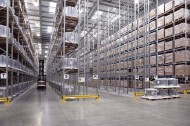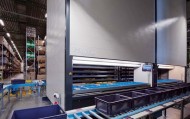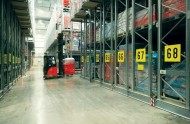 Warehouse and storage management is all about trade-offs. Whether you are trading cubic utilisation against slower retrieval times, or speed of retrieval against cost and capacity, there is no single ‘right’ answer or a ‘one-size-fits-all’ approach. Mark Cummings, Sales Manager from Dexion, experts in warehousing solutions for over 60 years, takes a look at some of the variables businesses should consider before committing to their final storage and racking solutions.
Warehouse and storage management is all about trade-offs. Whether you are trading cubic utilisation against slower retrieval times, or speed of retrieval against cost and capacity, there is no single ‘right’ answer or a ‘one-size-fits-all’ approach. Mark Cummings, Sales Manager from Dexion, experts in warehousing solutions for over 60 years, takes a look at some of the variables businesses should consider before committing to their final storage and racking solutions.
Know your business
If you are looking for effective storage optimisation, you first need to have a clear idea about the objectives you want to achieve from your warehousing. Does your business need to move high quantities of low value items, or low quantities of high value items? Do you have specialised goods that require equally specialised storage?
Increasing your warehouse efficiency also means thoroughly understanding the parameters within which you are working. Warehouse layout, materials flow, handling equipment, picking methods and safety systems are all issues that will influence the choice of storage or racking system.
Weighing up the options
 With your objectives agreed and parameters set, you can now consider the different racking and shelving solutions to match your particular business needs. Remember that it will always be a trade-off and there will never be just one way of configuring your warehouse – only a shortlist of options that suit your business more than others.
With your objectives agreed and parameters set, you can now consider the different racking and shelving solutions to match your particular business needs. Remember that it will always be a trade-off and there will never be just one way of configuring your warehouse – only a shortlist of options that suit your business more than others.
Wide aisle adjustable pallet racking is a popular option as it provides instant stock selectivity. However, the disadvantage is that standard forklifts need wider aisles, meaning less space for storing goods. Double deep racking can partly overcome this as it allows pallets to be stored two deep, but requires specialist extendable forks to access the pallet. While space savings can be made with this approach, the trade-off is the need to invest in specialised handling equipment. Similar issues arise with narrow aisle racking.
Drive-in racking systems, on the other hand, deliver very efficient storage, particularly for fragile goods, as rails take the weight of the pallet. No aisles are required, allowing high-density storage, which is also ideal for high volume storage of similar goods.
However, the trade-off is that bottom pallets have to be moved to allow access to top pallets. This is where the latest technology such as a robot shuttle, can improve efficiency by collecting pallets on any level, bringing them to the front, and allowing a normal pallet truck to be used. An alternative to drive-in systems are pallet flow solutions as these do provide ‘first in, first out’ options.
Mobile pallet racking offers the density of drive-in racking, with the accessibility of wide aisle racking and the ability to use standard forklifts, but the trade off might be cost of installation, possibly outweighed by the smaller foot print required.
Monitoring operations to improve efficiency
 One of the most effective ways of optimising your warehouse is by using a logistics optimisation software system. C-WIS (Warehouse Intelligence System), for example, is an analysis tool that enables optimisation of operations within the warehouse. Using data from a company’s ERP or WMS system, C-WIS analyses the working methods, goods’ flow, locations, capital binding and manning required, making recommendations to improve efficiency.
One of the most effective ways of optimising your warehouse is by using a logistics optimisation software system. C-WIS (Warehouse Intelligence System), for example, is an analysis tool that enables optimisation of operations within the warehouse. Using data from a company’s ERP or WMS system, C-WIS analyses the working methods, goods’ flow, locations, capital binding and manning required, making recommendations to improve efficiency.
Work with experienced storage solution companies
There are always a number of trade-offs to be made when trying to increase warehouse efficiency, and the ‘best’ solution for your company will greatly depend on the type of business or goods that you are handling. Working with an experienced storage solutions company that gives you access to knowledgeable consultants, engineers and project managers to help you navigate through all of the alternatives – is one of the best investments you can make to ensure you arrive at an optimal solution.
Dexion




Comments are closed.